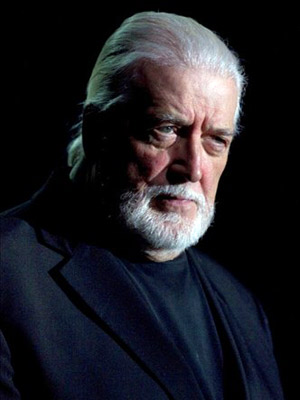(1) From Hammond to Heaven: The Enduring Genius of Jon Lord
Whenever the topic of music comes up, Jon Lord is the first name that bursts out of me – probably with a slightly ridiculous but undeniably fiery enthusiasm. It might seem odd that a prog/thrash metal guitarist considers the keyboardist of a classic rock band his greatest musical inspiration, but let me share a few thoughts and stories that might shed some light on this (seemingly) unexpected connection.
First and foremost, the late Jon Douglas Lord (June 9, 1941 – July 16, 2012) – founder, keyboardist, composer, and mastermind behind Deep Purple – was far more than just a rock organist. I’ve always seen him as a true musical visionary, a bridge-builder between “old” and “new,” between tradition and modernity. If you listen to Anthem from The Book of Taliesyn (1968), you’ll catch an early glimpse of his genius – a genius that reached its full grandeur with Deep Purple’s groundbreaking collaboration with the Royal Philharmonic Orchestra in Concerto for Group and Orchestra (1969).
At the time, blending classical instrumentation with rock music was considered either artistic heresy or outright blasphemy. But Jon Lord was one of the fearless revolutionaries who pushed rock toward new heights of complexity and sophistication, proving that it could stand alongside the so-called “high arts.” His relentless pursuit of synthesis between guitar-driven rock and symphonic arrangements wasn’t just an experiment – it was a defining step in the genre’s evolution.
His creative spirit extended far beyond rock and orchestral fusions. After a sixteen-year break in his solo career – and following the loss of his parents – he returned with deeply introspective, beautifully melancholic albums. Pictured Within (1997) is perhaps the most breathtaking of these – a masterful blend of classical and modern influences, but with a different orchestral approach than what he had previously explored in Concerto, Gemini Suite, Sarabande, or Windows.
Like many others, my journey into rock music began with Deep Purple’s biggest hits. At first, I wasn’t fully aware of Jon Lord’s immense role in shaping the fusion of classical and modern music. I learned to play guitar by obsessively studying and replicating Deep Purple riffs, and the deeper I went, the more fascinated I became with the band’s musical legacy.
I was around 17 or 18 when I first saw the film of Concerto for Group and Orchestra in my hometown cinema – and it completely shattered my perception of music. That was the moment I realized that the rigid divide between classical and modern music is nothing but an illusion. For me, both are just different expressions of the same artistic truth. Jon Lord was the one who taught me never to draw sharp, artificial lines between these worlds – he showed that they could flow together seamlessly, creating something transcendent.
I was lucky enough to see him live four times. The first was in Budapest in 1998 with Deep Purple, and the second, in 2002, was something truly unforgettable. It was in London, on the tour where he officially stepped down from the band. For most of the night, Don Airey played keyboards – but then, the lights dimmed. A murmur spread through the Hammersmith Apollo as we realized what was happening. And then, there he was. Jon Lord himself stood behind his old Hammond organ, launching into the iconic intro of Perfect Strangers. The energy in that room was electric. It remains one of the most powerful concert experiences of my life.
Later, I was fortunate enough to see him perform his solo work twice in Budapest. I never got to witness Pictured Within live with Sam Brown, something I deeply regret, but I cherish the moments I did have before we lost him in 2012.
Jon Lord’s influence on my musical taste – and, by extension, on my entire outlook on music and life – is immeasurable. His fearless creativity, his ability to weave worlds together, and his sheer musical soul continue to inspire me every single day.
Next time, I’ll write about another titan of rock: Tony Iommi, the legendary master of heavy riffs.


